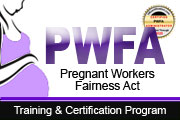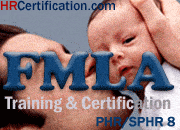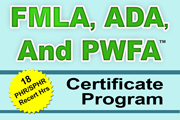
How to Handle Overlapping Leave Laws: FMLA, ADA, and PWFA Explained
10/23/2025When multiple leave laws apply to the same employee, HR has to play compliance chess. The FMLA, ADA, and now the PWFA each have distinct rules—but they often overlap in real-world situations. Understanding where these laws intersect helps prevent violations, lawsuits, and employee relations issues. This guide walks you through how to handle overlapping leave laws step by step, so you can coordinate job protection, accommodations, and pay rules without risking compliance errors.
Why Leave Law Overlap Happens More Often Than You Think
Leave law overlap is not an edge case; it's a common reality in HR. A single employee situation can easily trigger protections under the Family and Medical Leave Act (FMLA), the Americans with Disabilities Act (ADA), and the Pregnant Workers Fairness Act (PWFA) all at once. This happens frequently in scenarios involving pregnancy, a workplace injury, a chronic illness, or any medical condition that evolves over time.
For example, a pregnancy-related complication could start as a need for an accommodation under the PWFA, transition into a need for job-protected leave under the FMLA, and result in a long-term condition that qualifies as a disability under the ADA.
In these situations, compliance depends on two key factors: timing and documentation. Knowing which law applies at which stage—and documenting every decision, conversation, and accommodation offer along the way—is the only way to manage your legal obligations effectively and create a defensible record of your good-faith efforts.
Quick Overview — The Purpose of Each Leave Law
To coordinate these laws, you first have to understand their individual purpose and scope.
Family and Medical Leave Act (FMLA)
The FMLA provides eligible employees with up to 12 weeks of unpaid, job-protected leave for their own or a family member's serious health condition. Its core function is to guarantee job security and the continuation of health benefits during a significant medical event. It is a time-limited entitlement.
Americans with Disabilities Act (ADA)
The ADA is a civil rights law that prohibits discrimination against individuals with disabilities. It requires employers to provide reasonable accommodations to help qualified employees perform their jobs. Leave—including intermittent time off or an extended absence beyond FMLA entitlement—can be a form of reasonable accommodation, provided it doesn't create an "undue hardship" for the employer.
Pregnant Workers Fairness Act (PWFA)
The PWFA is the newest federal protection, requiring employers to provide reasonable accommodations for known limitations related to pregnancy, childbirth, or related medical conditions. Its focus is on keeping pregnant workers on the job safely. The PWFA covers temporary conditions that may not qualify as a disability under the ADA, such as morning sickness, lifting restrictions, or the need for more frequent breaks.
FMLA + ADA: The Classic Coordination Challenge
The overlap between the FMLA and ADA is one of the most common and challenging areas of leave management. An employee’s serious health condition under the FMLA may also be a disability under the ADA, triggering both laws simultaneously.
When Both Laws Apply
When a condition meets both definitions, the FMLA provides the right to job-protected leave, while the ADA provides the right to reasonable accommodation. An employer must honor both. For instance, you cannot deny an employee their right to take FMLA leave by offering ADA accommodation instead. The choice to take leave rests with the employee during their FMLA entitlement period.
Conversely, your ADA duties don't disappear just because an employee is on FMLA. The interactive process should begin as soon as you recognize the condition may be a disability.
Documentation and Communication Steps
- Designate FMLA Leave Promptly: As soon as you have enough information to determine the leave is for an FMLA-qualifying reason, provide the employee with the official designation notice.
- Begin the ADA Interactive Process: Concurrently, start a dialogue about reasonable accommodations. This conversation can explore whether any accommodations could help the employee work instead of taking leave or assist them upon their return.
- Document All Offers: If you offer an accommodation and the employee declines it in favor of taking FMLA leave, document this conversation carefully. This record is crucial if the employee later needs additional leave beyond their 12 FMLA weeks.
FMLA + PWFA: Pregnancy-Related Leave Scenarios
The PWFA adds a new layer to managing pregnancy-related absences, emphasizing accommodation before resorting to leave.
Before Leave — Reasonable Accommodations First
The PWFA’s primary goal is to keep employees working. When a pregnant employee develops a limitation, the first step is always to explore reasonable accommodations. Examples include providing a stool for a cashier who needs to sit, adjusting a schedule to accommodate morning sickness, or temporarily reassigning heavy lifting duties. Forcing an employee to take leave when a simple accommodation is available is a direct violation of the PWFA.
During Leave — Maintaining Benefits and Documentation
If an accommodation is not possible or the employee's condition requires a full absence from work, the leave will likely be covered by the FMLA (if it’s a "serious health condition"). During this period, FMLA rules govern job protection and benefits continuation. The PWFA doesn’t have separate benefit-continuation rules but requires that pregnant workers be treated the same as other employees who are similar in their ability or inability to work.
After Leave — Reinstatement and Further Accommodation
Upon return from FMLA maternity leave, the employee is entitled to reinstatement. If the employee has a lingering condition from childbirth, such as postpartum depression or physical recovery limitations, both the PWFA and the ADA may require further accommodations. For example, a condition like severe postpartum depression could become an ADA-covered disability, requiring a continued interactive process.
ADA + PWFA: When Accommodation Extends Beyond Leave
The ADA and PWFA are both accommodation-focused laws, but they cover different scopes. The PWFA is broader, covering temporary and minor pregnancy-related limitations, while the ADA covers more significant impairments that substantially limit a major life activity.
Both laws require employers to engage in a good-faith "interactive process" to find a workable solution. The steps are the same: talk to the employee, identify the limitation, explore potential accommodations, and document the decision.
When a pregnancy-related condition persists and meets the ADA’s definition of a disability, an employee’s right to accommodation continues. For example, if an employee exhausts FMLA leave but is still unable to return due to a childbirth complication, you may have to provide additional unpaid leave as a reasonable accommodation under the ADA, unless it creates an undue hardship.
The Three-Law Overlap: FMLA, ADA, and PWFA in One Case
In some complex cases, all three laws can apply to the same employee at different stages. Understanding how to layer these obligations is key.
Example Scenario: Pregnancy Complication Leading to Disability
An employee develops preeclampsia, a serious pregnancy complication.
- Step 1 (FMLA): Her doctor places her on bed rest for the final six weeks of her pregnancy. This is a serious health condition, so you designate the absence as FMLA leave.
- Step 2 (PWFA): After giving birth and exhausting her remaining six weeks of FMLA for baby bonding, she is cleared to return to work but has a temporary 15-pound lifting restriction. Her job requires occasionally lifting 25 pounds. Under the PWFA, you must engage in the interactive process and provide reasonable accommodation, such as reassigning lifting duties.
- Step 3 (ADA): Months later, she develops severe postpartum depression that substantially limits her ability to concentrate. This condition now qualifies as a disability under the ADA, triggering a new duty to provide accommodations, such as a modified schedule or a quieter workspace.
How to Layer Compliance Obligations
In this scenario, you must track each legal obligation as it arises. Designate FMLA leave properly, document the PWFA accommodation for the lifting restriction, and then initiate a new interactive process for the ADA-covered depression. Clear, continuous documentation and written communication with the employee are essential to show you met your duties at every stage.
Common Mistakes When Coordinating Multiple Leave Laws
Handling overlapping laws is complex, and mistakes are common. Watch out for these compliance errors:
- Requiring a full medical release: Demanding a "100% healed" fitness-for-duty certificate before allowing an employee to return, which ignores ADA and PWFA duties to accommodate restrictions.
- Forcing leave: Pushing an employee onto unpaid leave when a reasonable accommodation under the ADA or PWFA would have allowed them to continue working.
- Failing to continue benefits: Incorrectly stopping health benefits for an employee on a non-FMLA leave that should have been running concurrently with FMLA.
- Mixing up reinstatement rights: Forgetting that the ADA generally requires reinstatement to the original position, which is a stricter standard than the FMLA’s “equivalent position” rule.
Creating a Unified Leave Policy That Covers All Laws
The best way to manage overlap is to build a single, integrated leave and accommodation policy. This creates a consistent workflow for HR and clarity for employees.
Step 1 — Map Each Law’s Triggers and Timelines
Create a simple chart or visual matrix for your HR team that outlines the key features of each law: eligibility, duration, type of protection (job security vs. accommodation), and documentation rules. This helps your team quickly identify which laws apply in any given scenario.
Step 2 — Use One Documentation Workflow
Instead of having separate forms for each law, streamline your process. Use a single intake form for all accommodation and leave requests. This ensures you capture the necessary information to analyze the request under FMLA, ADA, and PWFA from the start.
Step 3 — Train Managers on Interactive Process Language
Managers are your first line of defense. Train them on a few key phrases to use when an employee mentions a need for leave or an accommodation, such as, "Thank you for letting me know. I'm going to connect you with HR so we can discuss this further." This ensures every request is escalated properly and consistently.
When Other Laws Add to the Mix: State Leave, Workers’ Comp, and More
Federal laws are just the baseline. HR must also account for:
- State Paid Family and Medical Leave: Many states have paid leave programs that provide wage replacement. This benefit runs concurrently with unpaid FMLA leave.
- Workers’ Compensation: A workplace injury may also be an FMLA serious health condition and an ADA disability. You must coordinate WC benefits with FMLA leave and ADA accommodation duties.
- Local Ordinances: Many cities have their own paid sick leave or predictive scheduling laws that can interact with an employee's leave.
When multiple entitlements exist, you must track them all concurrently to avoid "stacking" leave or providing conflicting benefits.
Documentation, Confidentiality, and Communication Rules
Across all leave laws, the rules for handling sensitive information are strict and consistent.
- Keep medical records separate: All FMLA certifications, doctor’s notes, and other medical information must be stored in a confidential file, separate from the employee's main personnel file.
- Limit manager knowledge: Supervisors should only be told about an employee’s functional limitations and work restrictions, not their diagnosis or medical history.
- Use consistent language: All documentation—from leave designation notices to accommodation approval letters—should use objective, non-discriminatory language.
Compliance Checklist — Coordinating Overlapping Leave Laws
Use these questions to audit your process for a multi-law leave request:
- Have you determined which laws (FMLA, ADA, PWFA, state) apply to this specific situation?
- If FMLA applies, have you sent the proper designation notices and are you tracking the 12-week entitlement?
- If ADA or PWFA applies, have you started a documented interactive process to explore reasonable accommodations?
- Are you applying the correct rule for benefits continuation and reinstatement, giving the employee the greater right?
- Have your managers been trained not to make promises or denials, but to escalate all requests to HR?
See How to Align Your Policies Across All Major Leave Laws
Simplify your compliance process. Stop treating leave laws as separate silos and start managing them with a single, coordinated strategy. A unified approach reduces errors, ensures fairness, and protects your organization from costly litigation. Learn how to manage FMLA, ADA, and PWFA together with one coordinated policy and clear documentation strategy.






Managing employee leave isn’t just paperwork—it’s compliance, communication, and compassion rolled into one. Whether it’s FMLA, ADA, or the PWFA, HR teams are expected to navigate overlapping laws, document every step, and protect both the organization and the employee. This guide breaks down the basics of leave management in HR, helping you understand the legal framework, streamline your process, and train your managers for consistent, compliant results.
...



